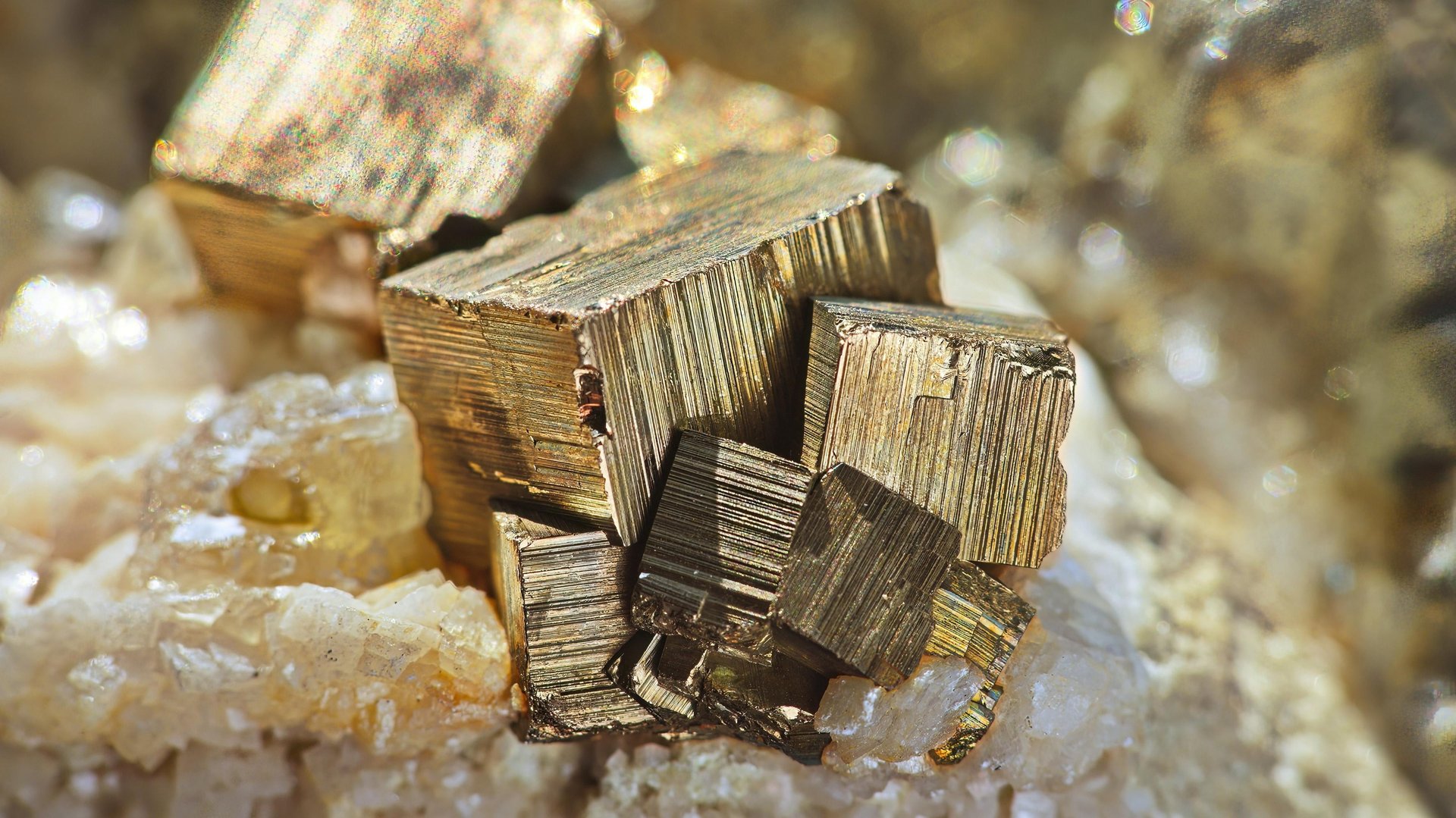Fool's gold could actually be worth money now. Here's why
Pyrite can contain an in-demand element that has sparked its own "gold rush"

Pyrite, the yellow metal known as fool’s gold, has another trick up its sleeve: it can contain lithium, a crucial element in the world’s quest for greener energy, according to a team of researchers that studied rock deposits in the eastern United States.
Suggested Reading
The researchers examined 15 rock samples that formed during the middle-Devonian, about 390 million years ago, in the U.S.’s Appalachian Basin. They found lithium (Li on the Periodic Table) in pyrite minerals in the shale, indicating that fool’s gold could contain an element touted for kicking off a new “gold rush.” The team’s research was announced at the European Geosciences Union General Assembly 2024, and their paper is currently hosted on the assembly website.
Related Content
“Some Li may be sequestered in pyrite in organic-rich shales,” the study authors wrote. “As pyrite is a common mineral in the Appalachian Basin, this has implications for exploiting shale pyrite in the Devonian sequence if the Li proves economically extractable.”
Lithium is an in-demand metal because of its use in battery technologies, and it is becoming increasingly coveted as electric vehicle production ramps up worldwide. Lithium batteries power everything from cars to computers, and, like the element cobalt, it is increasingly in sought for general “green” battery tech.
But lithium batteries have downsides, like an extraction process with environmental, social, and human rights impacts, and reactivity that makes them prone to catching fire.
Pyrite has fooled us before; in 2021, a team of researchers found that fool’s gold can, in fact, contain real gold. But the minerals have some clear differences: pyrite is magnetic, and gold is not. Pyrite often has some remarkable geometry to it, while gold looks more like lustrous, smooth chunks. But the recent team’s research indicates that pyrite could also demarcate a different kind of precious metal. Shailee Bhattacharya, a sedimentary geochemist at West Virginia University and co-author of the new study, said in an EGU release that finding lithium in pyrite is “unheard of,” though it remains an open question “how lithium and pyrite could be associated with one another.”
Bhattacharya cautioned that the research is “well-specific,” meaning making general conclusions on a connection between lithium abundance alongside pyrite would be folly. But the findings are a hint, at least, that coveted lithium may be hiding in plain sight, allowing the resource to be extracted without the need for new mines or drilling sites.
Given how dirty the extraction processes for elements like lithium and cobalt can be, being able to find the element in already spoilt parts of the planet would make the process cleaner. But finding lithium in other shales around the world would be an indicator that the Appalachian samples aren’t just a diamond — or dare I say pyrite — in the rough.
A version of this article originally appeared on Gizmodo.